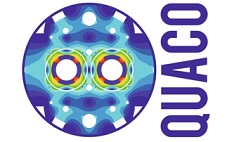The QUACO project is a part of the IR magnets (WP3) in Hilumi-LHC. It draws together several research infrastructures with similar technical requirements in magnet development, which allow the avoidance of unnecessary duplication of design effort and reduce overall cost through economies of scale using a joint procurement process. By pooling efforts on technological requirements and using their experience from prior procurements, the partners in QUACO act as a single buyer group with sufficient momentum for potential suppliers to consider the phased development of the requested magnets. The pre-commercial procurement (PCP) instrument used in this project thus takes away the mismatch between the high-end R&D effort and the existing market for these instruments and allow large and small specialised companies to increase the speed of their own research and technology development.
The QUACO partners are:
- Commissariat à l’Energie Atomique et aux Energies alternatives (CEA), France
- European Organization for Nuclear Research (CERN), Switzerland
- Centro De Investigaciones Energeticas, Medioambientales Y Tecnologicas (CIEMAT), Spain
- Narodowe Centrum Badan Jadrowych (NCBJ), Poland
The scope is to procure 2 pilot 3,8 m quadrupole magnets (Q4) with two 90 mm aperture, an integrated gradient of 440T with 120T/m in the transverse plane, with operational temperature of 1.9K that could be installed in the HL-LHC matching sections. More technical information can be found on this link
CERN acts as the lead procurer that coordinates and leads the joint procurement in the name and on behalf of the aforementioned organisations.
This procurement is a Pre-Commercial Procurement (PCP) that started on 1 March 2016 and ended in June 2021. The PCP awarded R&D services contracts to a number of R&D providers in parallel to compare competing alternative solution approaches. This was done in a phased approach with a framework agreement that covers 3 R&D phases (solution design, prototyping, pilot deployments made available to end users from the research communities supported by the buyers group) with intermediate evaluations after each phase that progressively selected the best competing solutions that were offered a specific contract for the next phase. Testing of the prototypes took place at CERN by experts and end-users and in this way the PCP provided a first customer test reference to participating R&D providers.
